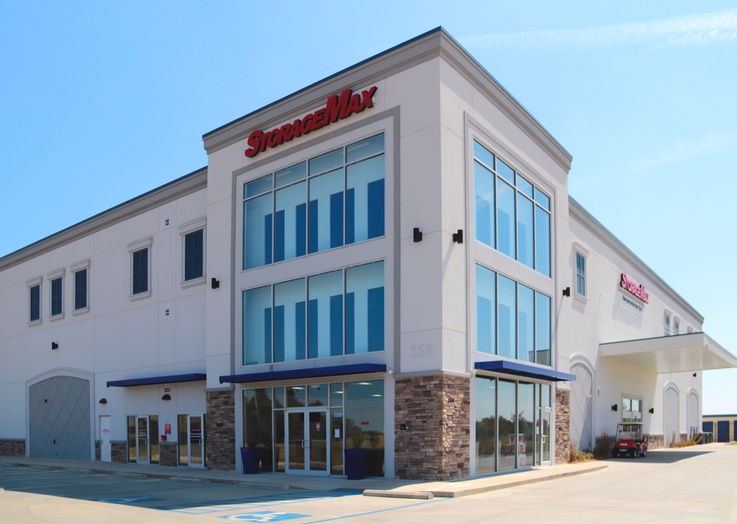What Is It Worth?
A Frequently Asked Question
Self-storage facilities typically provide measurable value creation potential for an investor through income and risk dimensions that positively impact value. While it is necessary to understand both the income and risk dimensions to arrive at an accurate value conclusion for a given self-storage facility, this article will only focus on the income factors of self-storage facilities in an effort to better understand the value creation potential for self-storage facilities and what a self-storage facility is worth.
On the Moffit-Gigowski (M-G) Value Potential Index, self-storage facilities have a value creation potential score of 6.9 out of 10. Among special-purpose real estate properties, self-storage facilities are one of the highest value-potential properties, comparing favorably with mobile home parks.
The most important income value drivers for self-storage facilities are exogenous by nature. They include product necessity and real property intensity. Let’s begin with the exogenous, or external, income drivers for self-storage facilities.
Product Or Service Necessity
People need affordable storage options whether the economy is contracting or expanding. In fact, one in 10 people use self-storage. With little new self-storage construction, demand may outpace supply due to population growth alone. This demand for self-storage drives the investment vehicle toward the high end of the product necessity scale.
Lifecycle Stage
As mentioned above, we are seeing a trend of limited supply in some markets as occupancies have increased along with incremental increases in monthly rental rates. While the self-storage industry is likely approaching maturity, there are a number of markets that have a relatively high demand for self-storage; but, due to current zoning restraints, other facilities may be unable to enter into these markets. On the whole, occupancies appear to be stabilizing in the 85 to 95 percent range, with publicly-traded REITs and professionally managed self-storage portfolio owners establishing and maintaining a goal occupancy above 90 percent. The industry is still highly fragmented.
Regulatory Intensity
Relatively few barriers to self-storage industry entry exist due primarily to limited regulation of the industry. While state and national self-storage associations have worked with local and state governments to define current laws and regulation, the relatively weak regulatory environment has allowed for easy entry into the self-storage market.
Real Property Intensity
For several decades, investors utilized the self-storage industry in an effort to develop awkwardly shaped land that was not easily developed with most other real estate intensive businesses due to the shape or geography of the particular land parcel. Today, however, self-storage investors have become increasingly particular about the potential land they look to develop and the types of existing facilities they are willing to purchase in an effort to complement their existing self-storage facility portfolios. The real property intensity of the self-storage facility is mostly driven by the nature of the product; it is a real estate product that is defined mostly by multi-unit storage structures. Generally speaking, the self-storage real estate drives the facility’s income, and, because of its permanency, the real property creates stable, sustainable cash flows.
Required Intellectual Capital And Proprietary Processes
Finally, no unique processes are necessary for a successful self-storage facility. However, the economies of scale realized by the public REITs and the large, multi-facility portfolio competitors have established intellectual property in their particular processes, such as call center structure, real-time rental pricing structures, market research software, and online marketing strategies. Basic development and property management acumen are the primary intangible requirements for self-storage investment success.
Now that we’ve reviewed the external income drivers to self-storage facilities, let’s review the secondary income determinants. The most important of the internal income value drivers include real options, brandability, and economies of scale.
Proprietary Assets
The typical self-storage facility consists predominately of real property assets. High-quality, well-maintained self-storage facilities in a desirable, high growth, metropolitan location typically describe the asset requirements of successful self-storage facilities. There are no patented assets or special, protected methods needed to operate a self-storage business. Thus, while proprietary assets can define the success of many types of businesses, and proprietary processes may help larger, multi-facility self-storage owners streamline operations, proprietary assets typically do have significant influence on the value of multi-unit self-storage portfolios.
Brandability
Brandability and economies of scale have divided mom-and-pop self-storage facilities from the professionally managed multi-facility portfolio owners and REITs that currently dominate the online marketplace. Facilities owned by Public Storage, for example, are seen across the U.S. and have dominated online self-storage marketing.
Public Storage’s geographical footprint, online presence, and consistent branding across more than 2,000 facilities, have established expectations. Self-storage consumers feel more comfortable with their storage investment when reasonable expectations are established and met consistently.
While larger self-storage facility owners have established themselves nationally within the industry, most self-storage facility competitors are similar enough to their price-sensitive consumer base that rental rates and move-in promotions also play a significant role in driving occupancy rather than the brand name alone. Even more important is the access to marketing and search engine optimization that has given the REITs a definite advantage in maintaining consumer awareness and promoting their brands through competitive move-in promotions and online specials.
Real Options
An individual self-storage facility can serve as an investment vehicle attached to a real option. This real option is the future opportunity that the real estate may be converted into a more profitable alternative use. At this moment in time, a self-storage facility may be the highest and best use for the subject real estate and property improvements.
However, at some point in the future, market demand may change such that the real option of the current asset may be a future opportunity to convert and develop the real estate into an alternative investment vehicle that will maximize investor value. This may require demolition and removal of the current fixed assets and construction of, for example, a retail shopping center or apartment complex. Other locations where the real property often enjoys embedded real options include commercial interchanges, commercial corridors, and executive neighborhoods.
Economies Of Scale
While bigger is not necessarily better, a portfolio of 100 facilities generates significantly greater cash flows per unit of storage than a portfolio of 10 self-storage facilities. Access to capital enables investors to grow portfolios and, along the way, streamline operations. This, in turn, cuts expenses and creates value for the shareholders. Management, administrative, marketing, and maintenance expenses are often significantly lower, per rentable square foot, for larger, multi-facility self-storage companies, since these larger companies, sometimes with national exposure, are able to decrease cash flow and occupancy volatility over a greater income-generating base.
Typically, larger companies also have greater access to cheaper capital for capital expenditures and routine maintenance requirements. Overall, multi-facility self-storage owners achieve greater financial returns than fewer, or single-facility, self-storage owners.
It is important to keep in mind that all income value driver determinants are not created equal. Further, the income generated by a self-storage facility is only as good as its corresponding context of risk.
Michelle Gigowski writes and consults in health care administration, real estate intensive valuation practices, and entrepreneurship. Her research interest is in organizational value building. She has co-authored books, articles, and case studies on valuation and entrepreneurship.
Timothy Moffit is chair of the Department of Economics and Business at Kalamazoo College in Kalamazoo, Michigan. He received his doctorate degree in business administration with a specialty in finance from Nova Southeastern University and his master’s in business administration from the Amos Tuck School at Dartmouth College. His teaching and research interests center on valuation theory and the analysis and understanding of financial statements.
More Content
Popular Posts
Recent Posts
When Germantown High School in Gluckstadt,...
It’s comforting to know that no matter how...
A very wise self-storage expert once said...
Senate Bill 709 (SB709) has many in the...
In January, self-storage industry veteran...
In April 1984, the first non-stop commercial...
Raise your hand if you’ve ever made plans,...
Everyone knows it: Investing in real estate...









